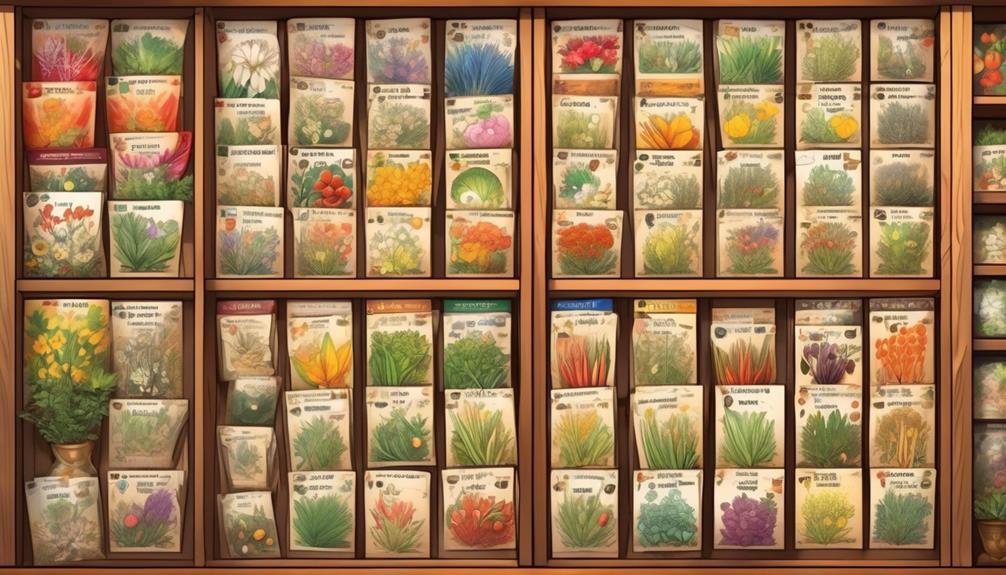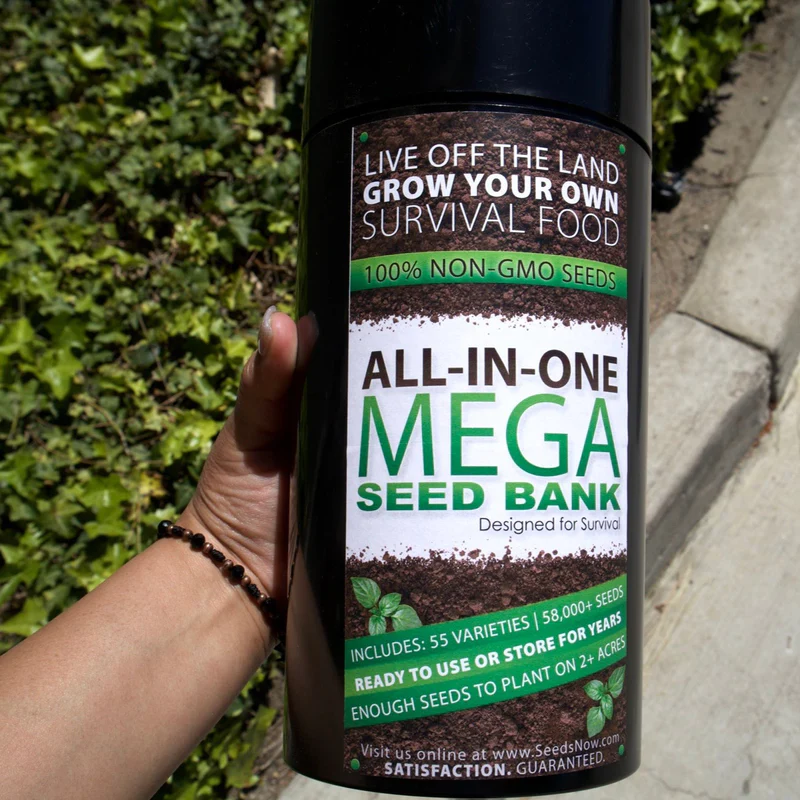Imagine you’re a gardener with a beautiful garden, carefully tended and bursting with life. But what if I told you that your garden could be more than just a source of immediate joy and sustenance?
What if I told you that you could become a steward of the future, safeguarding the very essence of your garden for generations to come? Starting a seed bank is like building a vault of possibility, a treasure trove of potential waiting to be unlocked.
And in this discussion, we will explore not only how to establish your own seed bank but also why every gardener needs one. Get ready to embark on a journey that will forever change the way you approach gardening.
Why Seed Banks?
- Seed banks are essential for preserving plant varieties and ensuring biodiversity.
- They provide a backup in case of crop failure or seed scarcity and safeguard against extinction.
- Seed banks maintain genetic diversity for the long-term survival of ecosystems and promote biodiversity in growing areas.
- Establishing a seed bank allows for self-reliance, sustainability in food production, and the preservation of desirable traits and heirlooms.
- In an emergency situation your seed bank could just prove to be the lifeline you need to provide food for your family in the future.
Importance of Seed Banks
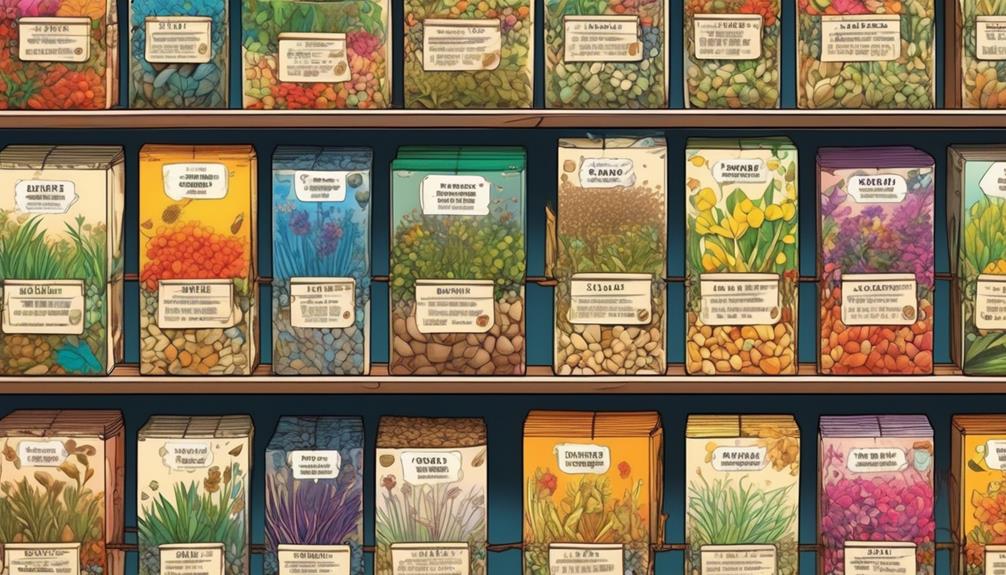
Seed banks are essential for the preservation of plant varieties, ensuring biodiversity and providing a reliable backup for gardeners in the event of crop failure or seed scarcity.
The importance of seed banks can’t be overstated. They serve as repositories of seeds, safeguarding against extinction and preserving lost plant varieties. By promoting biodiversity, seed banks play a crucial role in maintaining genetic diversity, which is essential for the long-term survival of our ecosystems.
For gardeners, having access to a personal seed bank is invaluable. It allows you to save seeds from plants you love and preserve desired plant characteristics. By practicing seed saving and storing seeds properly, you can ensure a constant supply of high-quality seeds for future planting seasons.
Whether it’s heirloom seeds, rare varieties, or unique plant species, your personal seed bank gives you the power to control and diversify your garden.
Furthermore, seed banks play a vital role in food production.
In the face of climate change, pests, and diseases, having a diverse range of seed types is crucial for ensuring agricultural resilience. Seed banks provide a safety net, offering a wide selection of seeds that can be used to replace crops that have failed or seeds that are scarce.
Benefits of Starting a Seed Bank
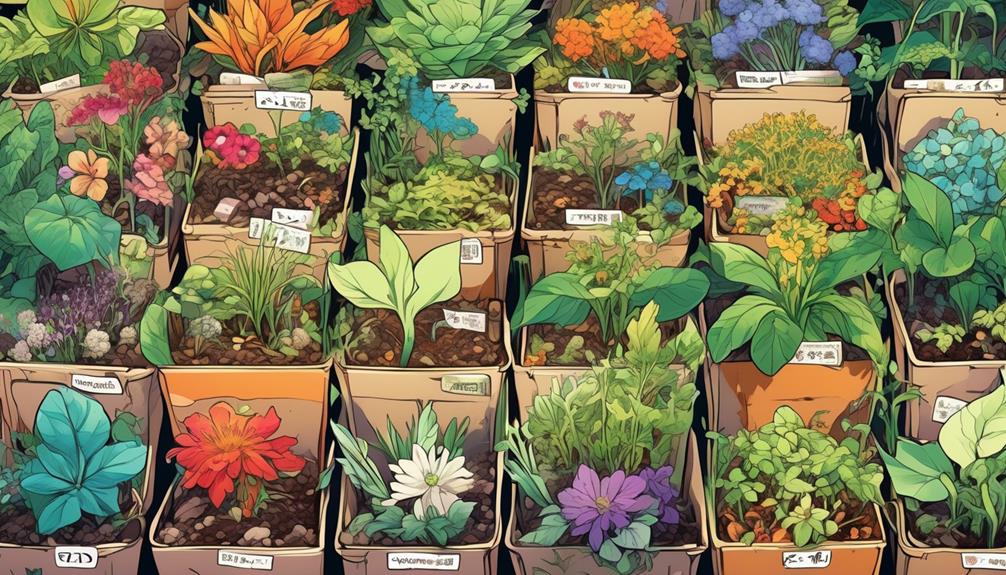
Starting a seed bank can provide gardeners with numerous benefits that enhance their gardening experience and ensure a sustainable and diverse supply of seeds for future planting seasons.
Here are four key benefits of starting a seed bank:
- Greater Probability of Successful Harvest: By saving and storing seeds, you have a backup in case of germination failure or seed scarcity. This increases the likelihood of growing plants and getting a bountiful harvest.
- Promotes Biodiversity: Seed banks encourage diversity in the growing area by collecting and storing a variety of vegetable seeds. This helps preserve local seed varieties and promotes biodiversity, which is vital for a healthy and resilient ecosystem.
- Self-Reliance and Sustainability: Starting a seed bank allows for self-reliance in food production. You can rely on your own saved seeds rather than constantly purchasing new ones. This not only saves money but also promotes sustainable gardening practices.
- Preserves Desirable Traits and Heirlooms: Seed banks are a valuable resource for preserving plants with desired characteristics, such as flavor, color, or disease resistance. They also help safeguard family heirlooms, ensuring that future generations can enjoy these unique and cherished varieties.
‘Did You Know? Many countries maintain their own seed banks, with over 1,700 globally, ranging in size from small to large. One of the largest is the Svalbard Global Seed Vault, also called the Doomsday Vault. It’s hidden on a mountain on an island north of the Arctic Circle’.
Steps to Establish a Seed Bank
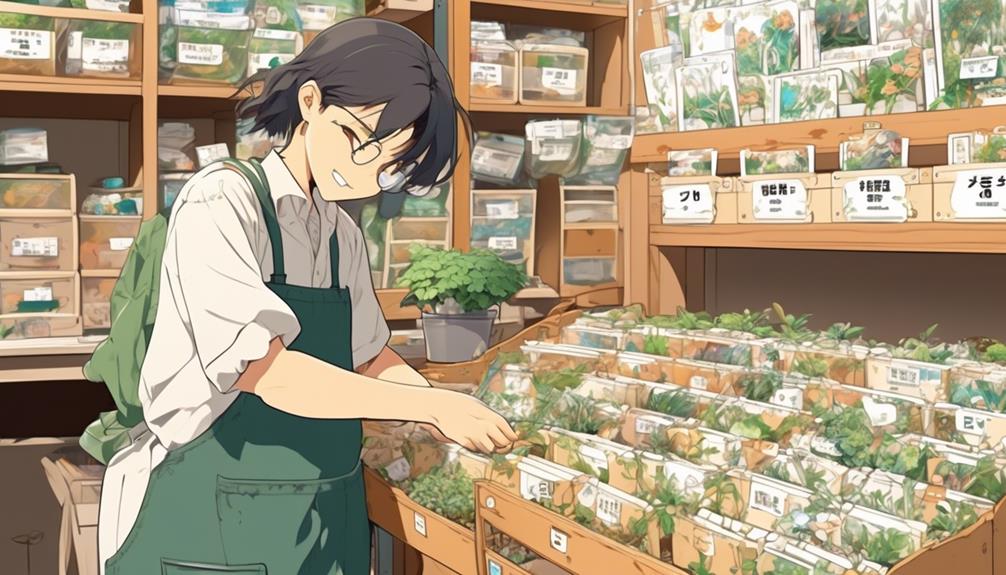
To establish a seed bank and ensure a sustainable and diverse supply of seeds, there are several practical steps you can take as a gardener.
These steps will help you preserve and protect the seeds for future use.
First, start by saving seed from your own garden. Select healthy and mature seeds from your best plants. Make sure to choose open-pollinated varieties to maintain their genetic diversity.
Next, store the seeds in a cool, dry place to maintain their viability. Use glass jars or airtight containers to protect them from moisture and pests. Label each container with the variety and the year it was saved.
To test the viability of your stored seeds periodically, you can use the paper towel method. Place a few seeds on a damp paper towel and cover them with another damp towel. Keep the towel moist and check for germination after a few days. Discard any seeds that don’t sprout.
Another important step is to join a seed savers organization or network. These organizations provide a platform for exchanging and sharing seeds with other gardeners. They also offer resources and knowledge on seed saving techniques.
Seed Selection and Storage
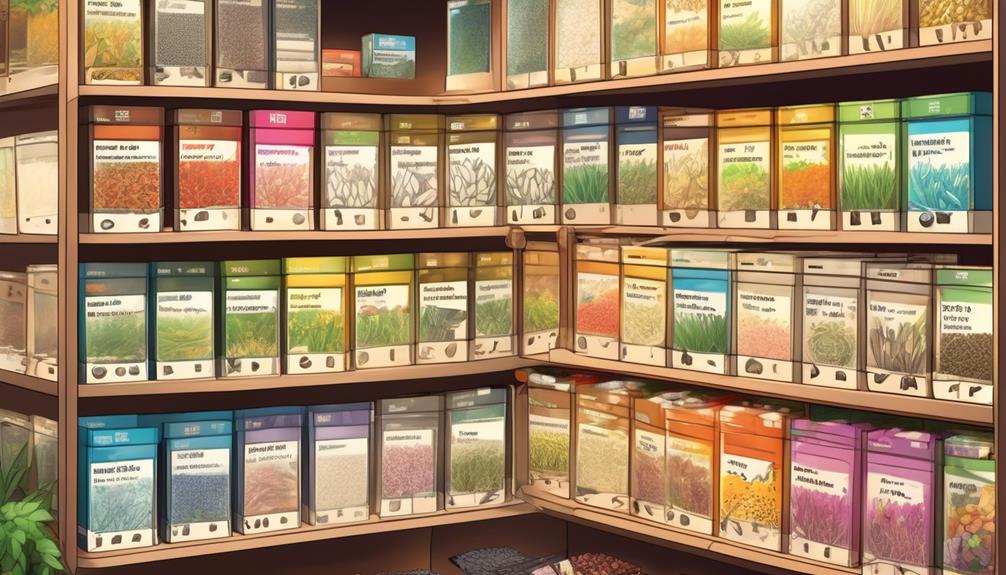
To ensure a diverse and viable seed bank, it’s crucial to carefully select and store a variety of seeds from vegetables, herbs, fruits, and flowers.
Here are four important steps to consider when it comes to seed selection and storage:
Choose a wide range of seeds:
- Select seeds from different types of plants to promote genetic diversity in your seed bank.
- Include a mix of hybrid, heirloom, and open-pollinated seeds to preserve a variety of traits and characteristics.
Use proper storage containers:
- Protect your seeds from moisture and pests by storing them in dry and airtight containers.
- Paper seed envelopes, glass jars, or mylar pouches all work well for storing seeds.
- Remember to label each container with the seed type and date of collection.
Find the right storage place:
- Store your seeds in a cool, dark, and dry location.
- Avoid exposing them to extreme temperatures, as this can reduce their viability.
- Consider freezing seeds for long-term storage, especially if you live in a hot and humid climate.
Test seed viability:
- Periodically test the viability of your stored seeds by conducting a germination test.
- Place a few seeds on a moist paper towel and keep them in a warm place.
- After a few days, check how many seeds have sprouted.
- This will help you determine which seeds are still viable for growing.
Managing and Organizing a Seed Bank
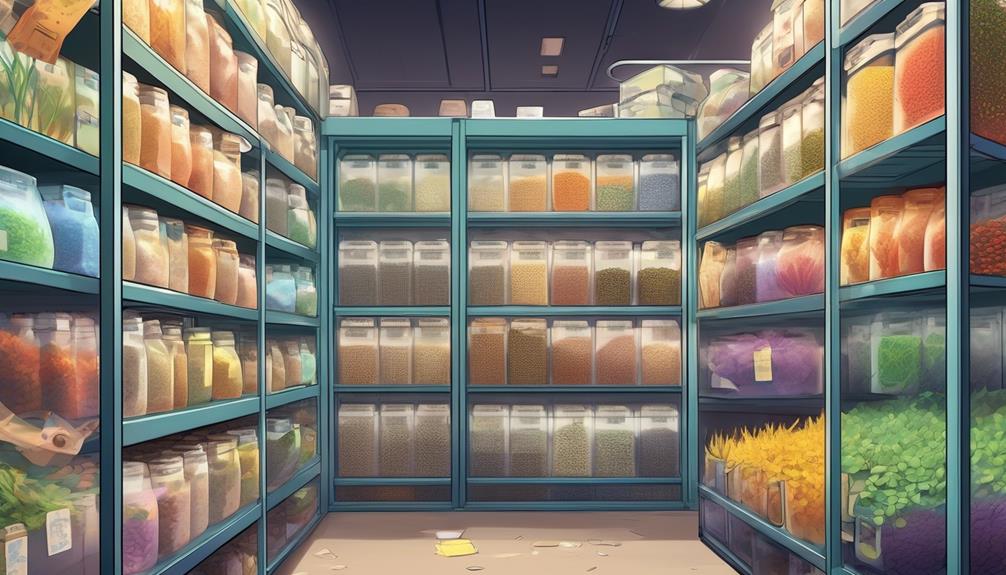
Now that you have selected and stored a diverse range of seeds, it’s time to focus on managing and organizing your seed bank effectively. Managing a seed bank at home involves a few crucial steps to ensure the longevity and accessibility of your seeds.
First, it’s essential to label and organize your seeds for easy access.
You can use paper seed envelopes, glass jars, or mylar pouches to store your seeds. Make sure to clearly label each container with the name of the seed and the date collected.
To maintain the viability of your seeds, store them in dark, cool, and dry conditions. Consider freezing seeds to prolong their shelf life, especially if you live in a hot and humid climate. Storing your seeds properly will help prevent them from losing their germination power over time.
To replenish your supply of seeds, it’s important to regularly grow out some of the seeds from your seed bank. Towards the end of the growing season, select a few plants from each crop and allow them to reach maturity. Once the seeds are ready, harvest and dry them thoroughly before placing them back in your seed bank.
Engaging With the Seed Saving Community
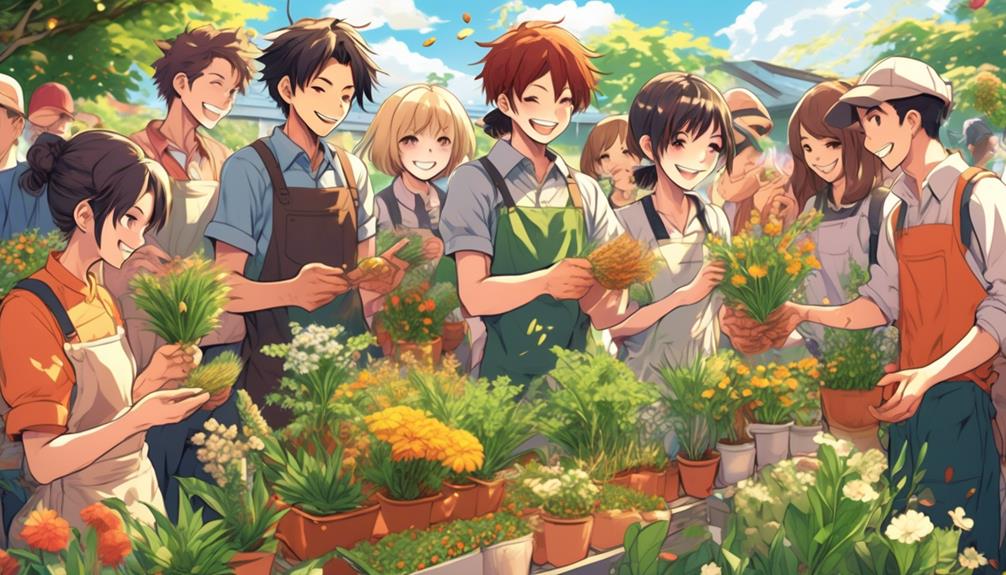
Engaging with the seed saving community is a valuable way to connect with fellow gardeners who share a passion for preserving and exchanging seeds. Here are four ways you can engage with the seed saving community:
- Join local seed saving groups and organizations: By joining these groups, you can connect with other gardeners who are also interested in seed preservation. You can share your knowledge, learn from others, and exchange seeds with like-minded individuals.
- Attend seed swaps and community events: Seed swaps are a great opportunity to exchange seeds, knowledge, and gardening tips with fellow enthusiasts. These events often happen during the growing season and provide a chance to discover new varieties and expand your seed collection.
- Participate in online forums and social media groups: Engaging with the seed saving community online allows you to connect with a wider network of people who are passionate about seeds. You can learn from their experiences, ask questions, and share your own insights.
- Volunteer at seed saving organizations or community gardens: By volunteering your time and skills, you not only contribute to seed conservation efforts but also have the opportunity to network with like-minded individuals. You can learn from experienced seed savers, gain hands-on experience, and make valuable connections within the community.
Engaging with the seed saving community provides a sense of belonging and allows you to learn from and contribute to a collective effort in preserving our seed heritage. So, don’t hesitate to get involved and be an active member of the seed saving community.
Resources for Successful Seed Banking
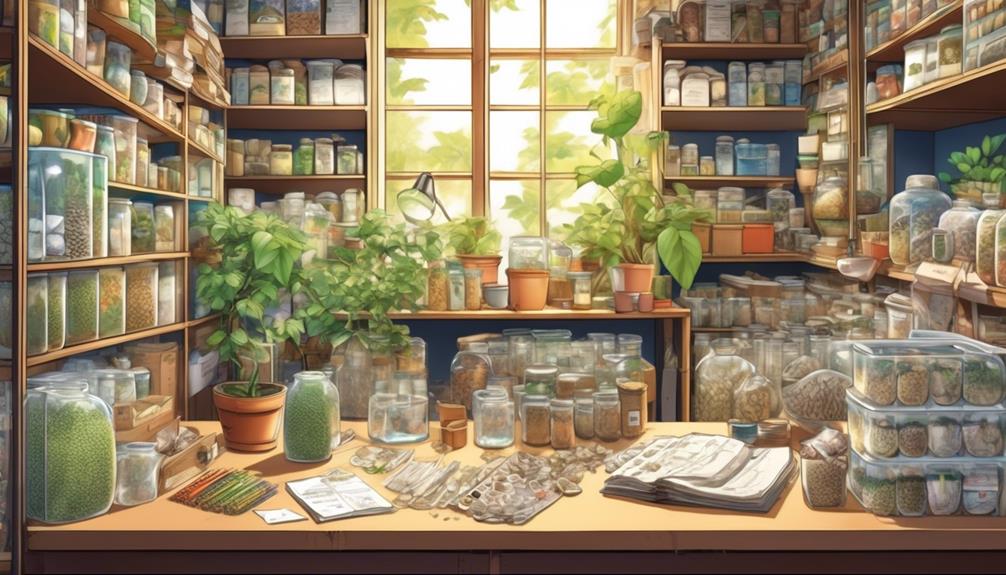
As you continue to engage with the seed saving community and explore ways to preserve and exchange seeds, it’s important to familiarize yourself with the necessary resources for successful seed banking.
One key resource is proper seed storage containers.
Consider using materials such as rice or desiccant packs, mylar pouches, or metal storage containers to ensure the seeds stay dry and protected from moisture.
It’s also important to use the right packaging for storing seeds.
Use paper envelopes or bags made from paper, as they allow the seeds to breathe while preventing the buildup of moisture that can lead to mold or rot.
Another important resource is knowledge about different seed varieties.
It’s crucial to understand the characteristics of different varieties, especially heirloom varieties, as they may require specific conditions to grow well. Make sure to label and organize your seeds properly, so you can easily identify and access them when needed.
Lastly, consider joining communities and attending conferences or workshops related to seed banking. These events provide opportunities for networking and knowledge sharing, allowing you to learn from experienced seed savers and exchange valuable information.
Buy A Survival Seed Bank
If you’re looking to jump start your own garden seed bank, you can also consider buying a ready made seed bank from a reputable seed supplier.
The Mega Seed Bank is one of the most comprehensive Seed Banks available. Packaged for survival & long-term storage. A great investment for when seeds no longer become available and/or if there are severe shortages in supply.
What’s included?
- 55 different varieties of seeds – over 58,000+ seeds in total – All tested to ensure extremely high germination rate. 100% GMO-FREE, Heirloom/Non-Hybrid, and Open-Pollinated, which means you will be able to save and replant the seeds after a successful harvest.
- All items come individually packaged inside a Large Seed Storage Vault – a heavy-duty vacuum sealing storage container. Provides superior moisture barrier + Pest, insect, and rodent resistant. It’s also Freezer safe.
The Mega Seed Bank is so robust & well packaged you could even bury it in the garden for safe keeping. The seeds will remain viable for many years to come and you’ll always have a safe supply of seeds for any future emergencies. If you can afford it, buying a seed bank is a great way to get started quickly.
Learn More About The Mega Seed Bank Here
Start Your Seed Bank…
Starting a seed bank is a crucial step for every gardener. It not only ensures a steady supply of seeds for future planting, but also allows for the preservation and sharing of rare and heirloom varieties.
By promoting self-sufficiency, resilience, and genetic diversity in plant species, seed banks play a vital role in maintaining biodiversity and protecting against crop loss or extinction. So, don’t hesitate to establish your own seed bank and contribute to the sustainability of our gardens and ecosystems.
